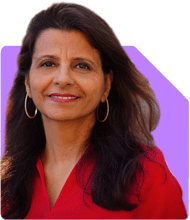Ramalingam Kalirajan |2770 Answers |Ask -Follow
Mutual Funds, Financial Planning Expert - Answered on May 09, 2024
He has an MBA in finance from the University of Madras and is a certified financial planner.
He is the director and chief financial planner at Holistic Investment, a Chennai-based firm that offers financial planning and wealth management advice.... more

I have started 16000 sip and I am 31 years now. MF portfolio: 1)Tata small cap direct growt:5000 2)Nippon India Large cal direct growth:4800 3)Motilal oswal midcap :3600 4) Parag parik elss fund:2500 Can you please review and suggest changes and improvement required.
Your current portfolio comprises funds across different market segments, which is a good start. However, there are a few considerations to enhance diversification and risk management:
Tata Small Cap Direct Growth: Small-cap funds can offer high growth potential but come with higher volatility. Given their risk profile, it's essential to allocate an appropriate portion of your portfolio to small caps. Consider reviewing the performance and risk metrics of this fund regularly.
Nippon India Large Cap Direct Growth: Large-cap funds provide stability and steady returns over the long term. It's a wise choice to have exposure to large-cap stocks for capital preservation and lower volatility. Continue monitoring the fund's performance and ensure it aligns with your investment objectives.
Motilal Oswal Midcap: Mid-cap funds offer the potential for high returns but carry higher risk compared to large-cap funds. Given your age and risk tolerance, a moderate allocation to mid-cap stocks can enhance portfolio diversification and growth potential. Monitor the fund's performance closely and consider rebalancing if necessary.
Parag Parikh ELSS Fund: ELSS funds offer tax-saving benefits along with the potential for wealth creation. It's a prudent choice to invest in ELSS funds for long-term goals while enjoying tax benefits under Section 80C of the Income Tax Act. Review the fund's performance and tax implications regularly.
When considering direct funds versus regular funds, it's essential to understand the disadvantages of direct funds. Direct funds require investors to conduct their research and make investment decisions independently, which can be time-consuming and may lead to suboptimal choices. On the other hand, investing through a Certified Financial Planner (CFP) with expertise in mutual fund selection can provide access to professional advice, personalized portfolio management, and ongoing guidance to navigate market volatility effectively.
To further diversify your portfolio, consider adding exposure to other asset classes like international funds, debt funds, or balanced funds. A well-diversified portfolio can help mitigate risk and optimize returns over the long term.
Regularly review your MF portfolio with a Certified Financial Planner to ensure it remains aligned with your financial goals, risk tolerance, and market conditions. Your CFP can provide personalized guidance and recommendations based on your unique circumstances.
By staying disciplined in your investments and making informed decisions, you're on the right path to achieving your financial objectives.
Best Regards,
K. Ramalingam, MBA, CFP,
Chief Financial Planner,
www.holisticinvestment.in
You may like to see similar questions and answers below
Ramalingam Kalirajan |2770 Answers |Ask -Follow
Mutual Funds, Financial Planning Expert - Answered on May 12, 2024
Ramalingam Kalirajan |2770 Answers |Ask -Follow
Mutual Funds, Financial Planning Expert - Answered on Apr 12, 2024
Ramalingam Kalirajan |2770 Answers |Ask -Follow
Mutual Funds, Financial Planning Expert - Answered on Apr 15, 2024
Ramalingam Kalirajan |2770 Answers |Ask -Follow
Mutual Funds, Financial Planning Expert - Answered on Apr 15, 2024
Ramalingam Kalirajan |2770 Answers |Ask -Follow
Mutual Funds, Financial Planning Expert - Answered on May 11, 2024
Komal Jethmalani |309 Answers |Ask -Follow
Dietician, Diabetes Expert - Answered on May 20, 2024
Ramalingam Kalirajan |2770 Answers |Ask -Follow
Mutual Funds, Financial Planning Expert - Answered on May 20, 2024
Ramalingam Kalirajan |2770 Answers |Ask -Follow
Mutual Funds, Financial Planning Expert - Answered on May 20, 2024
Ramalingam Kalirajan |2770 Answers |Ask -Follow
Mutual Funds, Financial Planning Expert - Answered on May 20, 2024
Ramalingam Kalirajan |2770 Answers |Ask -Follow
Mutual Funds, Financial Planning Expert - Answered on May 20, 2024
Ramalingam Kalirajan |2770 Answers |Ask -Follow
Mutual Funds, Financial Planning Expert - Answered on May 20, 2024
Ramalingam Kalirajan |2770 Answers |Ask -Follow
Mutual Funds, Financial Planning Expert - Answered on May 20, 2024
Ramalingam Kalirajan |2770 Answers |Ask -Follow
Mutual Funds, Financial Planning Expert - Answered on May 20, 2024
Ramalingam Kalirajan |2770 Answers |Ask -Follow
Mutual Funds, Financial Planning Expert - Answered on May 20, 2024
Ramalingam Kalirajan |2770 Answers |Ask -Follow
Mutual Funds, Financial Planning Expert - Answered on May 20, 2024


















.jpg)


